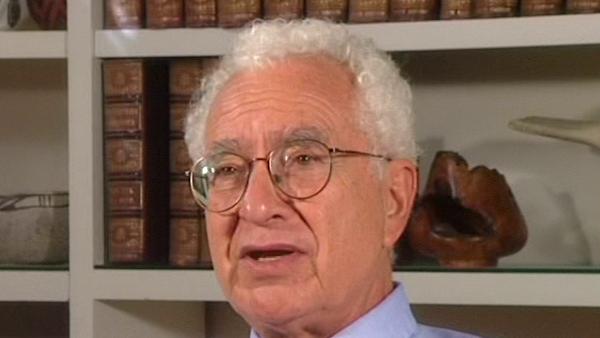NEXT STORY

Worries about the Caltech report
RELATED STORIES

NEXT STORY

Worries about the Caltech report
RELATED STORIES


|
Views | Duration | |
|---|---|---|---|
| 91. Departmental interaction holds the key | 1048 | 04:02 | |
| 92. The Eightfold Way | 1122 | 02:28 | |
| 93. Worries about the Caltech report | 908 | 03:32 | |
| 94. Re-writing the Eightfold Way paper and publishing in 1962 | 1 | 928 | 03:53 |
| 95. 1962 International Conference at Geneva and the birth of quarks | 1008 | 05:28 | |
| 96. Yuval Ne'eman | 1188 | 04:01 | |
| 97. Working on Regge pole theory | 725 | 04:29 | |
| 98. People at Caltech | 1271 | 00:54 | |
| 99. SU(3) - fundamental triplets | 738 | 01:02 | |
| 100. Working with Goldberger and Low at MIT | 680 | 02:19 |


It was January ’61 when I worked it out and very soon I completed it and I was feeling in a… I was in a very good mood that year, my mental health was very good, I was brimming with mental health. So as soon as I finished it I wrote it up as a Caltech report. I didn't know that a Caltech report wasn't a publication, that it was just a pre-print. I assumed if I wrote something up as a Caltech report it was a… it was a paper, because Caltech reports were brand new, they'd just been started: Syncotron Laboratory Research Reports and I assumed they were… constituted publication. Anyway, I wrote it up, but I was a little worried about it because there were a number of issues that were unresolved. And those I have discussed in the paper that I gave later in Catalonia in 1983, Sant Feliu de Guíxols. I was worried because of the clash between the strong interaction and the weak interaction theory if they were both Yang-Mills theories in the same charge space, because in that paper I had an SU(3) Yang-Mills theory for the strong interaction. I also used the charges for a higher symmetry of the strong interactions beyond isotopic spin, and that worked beautifully: that gave me the super multiplets; the mass rule. If one put in splitting by eighth component of the octet, the mass rule worked very well; lots of other things seemed very good. But I was worried about the Yang-Mills theory for the strong interactions clashing with the Yang-Mills theory for the weak interactions. I was worried about how to make the theory renormalizable because one had to introduce violations and I knew that those destroyed the renormalizability. So in the pre-print I advertised for a weak… a… a soft mass breaking mechanism, not thinking that if I revisited our work on the sigma model I might get that mechanism. But anyway, I asked for one. There were other things that bothered me, too.
New York-born physicist Murray Gell-Mann (1929-2019) was known for his creation of the eightfold way, an ordering system for subatomic particles, comparable to the periodic table. His discovery of the omega-minus particle filled a gap in the system, brought the theory wide acceptance and led to Gell-Mann's winning the Nobel Prize in Physics in 1969.
Title: The Eightfold Way
Listeners: Geoffrey West
Geoffrey West is a Staff Member, Fellow, and Program Manager for High Energy Physics at Los Alamos National Laboratory. He is also a member of The Santa Fe Institute. He is a native of England and was educated at Cambridge University (B.A. 1961). He received his Ph.D. from Stanford University in 1966 followed by post-doctoral appointments at Cornell and Harvard Universities. He returned to Stanford as a faculty member in 1970. He left to build and lead the Theoretical High Energy Physics Group at Los Alamos. He has numerous scientific publications including the editing of three books. His primary interest has been in fundamental questions in Physics, especially those concerning the elementary particles and their interactions. His long-term fascination in general scaling phenomena grew out of his work on scaling in quantum chromodynamics and the unification of all forces of nature. In 1996 this evolved into the highly productive collaboration with James Brown and Brian Enquist on the origin of allometric scaling laws in biology and the development of realistic quantitative models that analyse the influence of size on the structural and functional design of organisms.
Tags: Caltech, Syncotron Laboratory Research Reports, Catalonia, Sant Feliu de Guixols
Duration: 2 minutes, 29 seconds
Date story recorded: October 1997
Date story went live: 24 January 2008